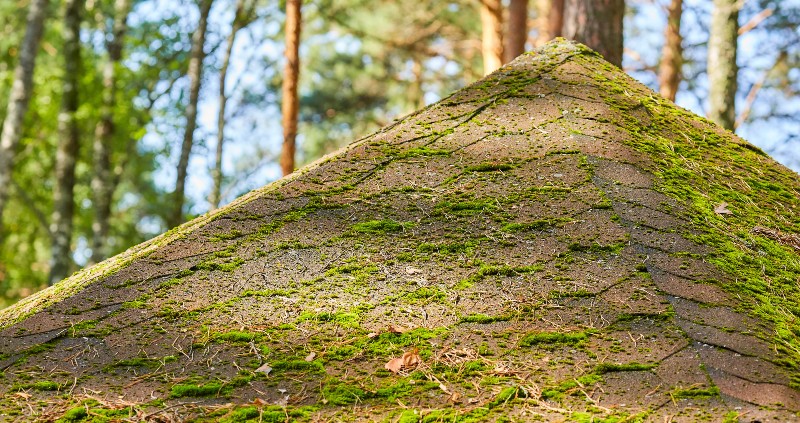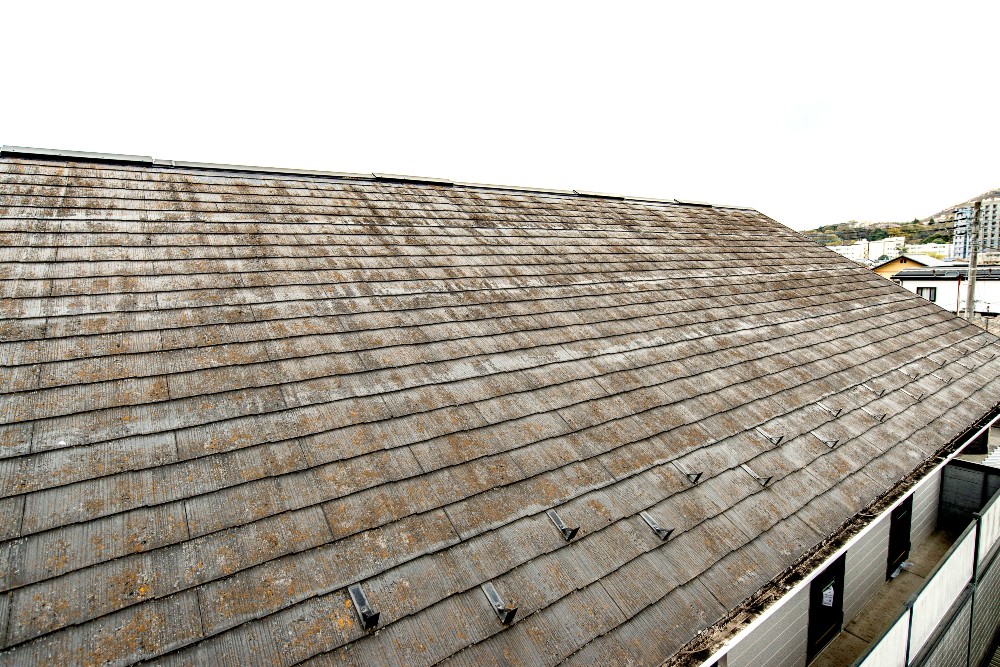From asphalt shingles to traditional Spanish barrel roofing, Colorado rooftops span the full gamut of styles, materials and sizes.
If you’re a home or business owner in the Centennial State, you have a vested interest in the health and wellness of your roof, no matter what style it is or how long ago it was installed. At A-to-Z Roofing & Exteriors, we help our customers stay on top of (no pun intended) any potential roofing issues by educating them about some of the most common warning signs of roof degradation and failure.
Sometimes, all it takes is a brief visual inspection to detect the telltale signs of a developing roofing problem. In addition to the obvious indicators like warped or curling tiles, cracked flashing, or balding shingles, roof stains can spell trouble for Colorado roofs.
But, not all roof stains are necessarily problematic. So, how can you tell if a roof stain is something you can ignore or if it’s a symptom of a bigger issue that needs immediate action?
The roofing experts at A-to-Z Roofing & Exteriors are here to help answer this question by explaining the different types of roof stains found in Colorado, and how you can identify them.
Most Common Roof Stain #1: Algae
If you’re seeing long, tapered streaks of green, blue-green, or black, the culprit could be algae. The good news is that mild to moderate cases of algae growth on a roof are rarely destructive; they are more of a cosmetic nuisance than anything else.
In some cases, algae growth can be so severe that moss begins to grow on top of the affected area. When this happens, water can be absorbed by the moss and create a potential leak if the issue isn’t addressed.
There are some steps you can take to safely and effectively remove most moss and algae buildup from your roof. For more information on this topic, check out our blog entitled, “How to Remove Moss from a Roof”.

Want to prevent algae from growing in the first place? This can be done by having copper or zinc strips installed in strategic locations on your roof (typically near the apex of the roof). This is a fairly inexpensive and quick process, and the solution lasts for years.
Remember that algae and moss are wholly different from mold. Mold rarely grows on roof surfaces because direct sunlight kills it. However, it can happen. Mold stains are splotchy and dotted, and a trained eye can often distinguish them from algae stains.
If you suspect you have mold growing on your roof, it’s advisable to take action immediately. Mold is incredibly intrusive and can cause extensive damage to supporting structures.
Most Common Roof Stain #2: Proximate Causes
When there is an isolated stain in a localized area of the roof—a stain that doesn’t exist anywhere else—it could be caused by something in proximation to the roof itself. Some examples include trees, tall shrubbery, or sooty chimneys.
These stains can be dark grey to black in color, and some of them can even be beige or brown, which is an indicator of rust.
Sometimes, older flashing or improperly installed roof appliances can shed rust flakes that accumulate on the roof. Also, tall trees are ideal roosting spots for birds, squirrels, and other animals. When they ‘do their business’ on your roof over time, the resulting stain can become an obvious eyesore.
Cleaning roof stains caused by foliage or rust is typically a temporary fix; if the stain is especially problematic, consider having the trees trimmed or having the source of any rust identified and treated or replaced. Soot stains can require the use of harsh chemicals or complete shingle replacement in some cases; it’s recommended that you call us to properly diagnose these types of stains.
Most Common Roof Stain #3: Calcium or Other Mineral Deposits
If you’re noticing the accumulation of white or light grey stains on your roof, you could be looking at calcium, salt, or other mineral deposits that are left behind after water evaporates.
The source of these deposits can vary. Often, an evaporative cooler (also known as a ‘swamp cooler’) can leak onto the roof. As this leaked water dries, the residual minerals can develop into a caked-on residue.
In other cases, evaporated rainwater can sometimes leave mineral deposit stains, but this is much rarer in Colorado compared with other parts of the country. Thankfully, calcium and mineral stains can be fairly easily washed off with a mild detergent and some elbow grease.
Got Roof Stains? We Can Clean ‘Em!
No matter what kind of stains you’re looking at on your roof, the professionals at A-to-Z Roofing & Exteriors can identify and remove them quickly and effectively. And, if your roof is in need of more extensive work, we can help with that, too.
To schedule an on-site inspection, contact us today.

